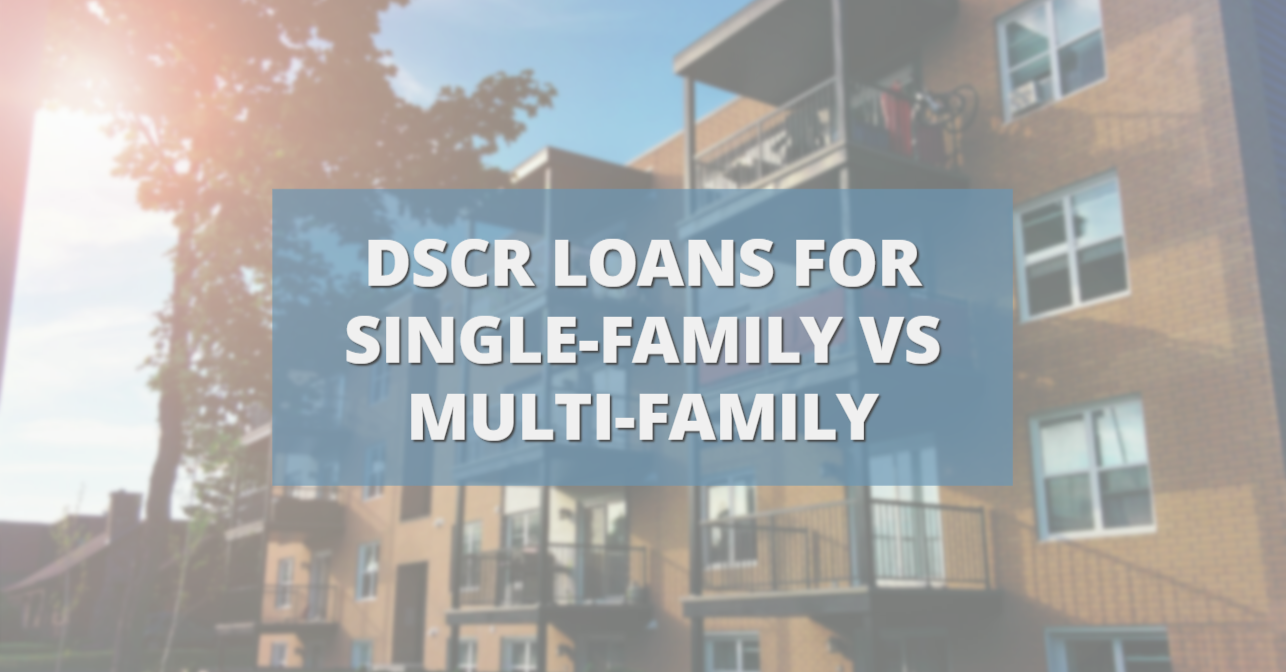What you need to know about the DSCR loan for commercial property or multi-family.
Maybe you have the chance to buy an apartment unit. It could have 40 units, or just five. But what if you still want the simplicity of a DSCR loan?
Most of the time, DSCR loans are only available for single-family rentals – or sometimes up to fourplexes. However, there is a product very similar to a DSCR loan that can be used for commercial property and multi-family apartment buildings.
Let’s explore how these loans differ in terms and requirements from other DSCR loans.
What Is a DSCR Loan for Commercial Property?
A DSCR loan is a product that does not rely on income from the borrower or borrowing entity. The borrower could be an individual, an LLC, or a partnership.
Regardless of who is borrowing, the lender does not require their income information.
Instead, a DSCR loan depends on the income (rent) from the property. A debt service coverage ratio is the rent divided by the expenses of a property. If the DSCR is 1, that means the income perfectly covers the expenses, breaking even.
Ratio Requirements for a DSCR Loan
A DSCR loan for commercial property will likely require at least a 1.2 DSCR. This would mean your income is 120% more than your expenses.
For instance, if your mortgage, interest, taxes, and insurance add up to $1,000 per month, your rent must be $1,200 per month to have a DSCR of 1.2.
Differences Between the Types of DSCR Loans
Let’s look at the differences between a typical DSCR and a DSCR-style product that is used for multi-family and commercial properties.
- Loan size. The average DSCR loan is for single-family units, duplexes, and fourplexes, usually around $300k to $400k. A DSCR loan for commercial property, however, is a larger loan – typically anywhere between $1 million to $2 million.
- LTV. For a typical DSCR loan, you could get an LTV of 80-85%. Commercial DSCR loans max out at 75%.
- Terms. A DSCR loan for commercial property can be amortized over 30 years, or it can be interest-only. But they’re only fixed for a certain period, most commonly five, seven, or ten years.
Requirements for Commercial Property DSCR Loans
There are a few unique requirements for a DSCR loan on a commercial or multi-unit property.
- Properties that have at least $50,000 in value or more.
- Minimum loan size starts at $1 million to $2 million.
- Units must be at least 75 to 90% occupied.
- DSCR of 1.2 or higher.
- Appraise and verify rents for each property.
This style of DSCR loan is not good for buying and fixing up value-add properties. To meet all of the requirements, the property must already be stable, rented, and bringing in rent.
4 Benefits of a DSCR Loan for Commercial and Multi-Family Property
These loans not only work for commercial properties (ie, a 20-unit apartment building), but it also works for portfolios. So if you have five single-family homes you want to put under one loan, this product could also do that. The properties must appraise for $50k or higher.
Non-recourse means you don’t have to personally sign or personally guarantee it – it all goes through your LLC. So your lender won’t come after you if something goes wrong.
These DSCR-style loans are helpful while banks are tight. If you don’t want to go through the hassle of a bank (or even if you can’t qualify for a bank loan), a DSCR can be a great alternative.
A DSCR loan won’t require your tax returns, proof of income, or any of the other paperwork that typically drags out the loan process. All you need is an LLC, a good credit score, and a qualifying property.
More on DSCR Loans
A DSCR loan could be the right fit for your single-family, multi-family, or commercial property.
Left with questions about DSCR loans? Check out these videos.
Want more info for your deal or portfolio? Reach out at Info@TheCashFlowCompany.com.
Not sure your property’s DSCR qualifies? Use this free, simple DSCR calculator.



